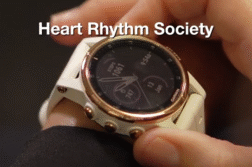ATLANTA, Ga. (Ivanhoe Newswire) – Forty thousand babies a year are born with congenital heart disease – about one in four of those infants has a life threating condition that affects how the heart is shaped, or how it works, or both. Now, for the first time, doctors have been able to perform a life-saving heart procedure on one of the smallest infants in the nation. Preemie’s
“PDA – or Patent Ductus Arteriosus – it’s a vessel that all of us, yourself included, had when you’re inside of your mother and once you came out, it actually closed on its own,” explains congenital interventional cardiologist at Children’s Healthcare of Atlanta, R. Allen Ligon, Jr., MD.
The PDA connects the big arteries that come off of the heart and goes into the lungs and body. But for some babies, the PDA doesn’t close.
Dr. Ligon says, “It’s incredibly common for babies who are born too early, or premature babies, for that vessel to stay open.”
If this happens, it can steal blood flow from other organs and cause an enlarged heart. Without surgery, these babies lives are at risk. That’s why it was necessary for Dr. Ligon to perform a heart vessel closure on a preemie born at 22 weeks, weighing just one point one pounds – the same weight as one glass of water.
“You can imagine a one-pound infant’s fist and how small it is – that’s how small her heart is,” Dr. Ligon emphasizes.
Snaking a catheter in the baby’s leg, the doctor delivered a PDA closure device up through the heart inside the PDA. The PDA creates a controlled clot that closes the vessel. Six days after the procedure, the tiny baby girl was off blood pressure meds, off the ventilator, gaining weight, and doing well.
The PDA closure device will never have to be removed. As the little girl grows, the tissue will grow over the PDA closure device and will become part of her body. Preemie’s
Contributors to this news report include: Marsha Lewis, Producer; Matt Goldschmidt, Videographer; Roque Correa, Editor.
To receive a free weekly e-mail on medical breakthroughs from Ivanhoe, sign up at: http://www.ivanhoe.com/ftk
Source:
https://www.cdc.gov/ncbddd/heartdefects/data.html
MEDICAL BREAKTHROUGHS
RESEARCH SUMMARY
TOPIC: FIXING A PREEMIE’S FAILING HEART…WITHOUT SURGERY
REPORT: MB #5265
BACKGROUND: Congenital heart disease refers to a group of structural or functional abnormalities in the heart that are present at birth. These anomalies develop during the early stages of fetal development, often before the mother is even aware that she is pregnant. CHD is one of the most common types of birth defects, affecting approximately one percent of all live births. Forty thousand babies are born per year in the United States with congenital heart disease and around one in four babies with a congenital heart disease have a critical condition. There are different state-based birth defects programs that follow CHD guidelines but there is no current existing program that looks into how congenital heart diseases can affect older children or adults.
https://www.cdc.gov/ncbddd/heartdefects/data.html)
SYMPTOMS & DIAGNOSIS: There are many different diagnostic processes for congenital heart disease and common methods can include, prenatal screenings, fetal echocardiography, clinical assessments, oxygen saturation tests, electrocardiograms, chest x-rays, echocardiography, cardiac MRIs and CT scans, and genetic testing. The symptoms of congenital heart disease can vary widely depending on the type and severity of the heart defect. While some CHDs may cause noticeable symptoms shortly after birth, others might go undetected for weeks, months, or even years. Common symptoms associated with CHD can include cyanosis, rapid breathing, rapid heartbeats, blue-tinted nails and lips, difficulty gaining weight, sweating, fatigue, swelling, respiratory infections, dizziness, and sleepiness.
https://www.cdc.gov/ncbddd/heartdefects/facts.html)
NEW TECHNOLOGY: According to Stanford University Medicine, with many states laws restricting abortion access, the number of babies born with severe congenital heart disease will increase. Researchers predict that this will strain the healthcare system’s ability to meet patient’s needs. The study was published in Obstetrics and Gynecology and focused mainly on single ventricle cardiac defects. They found that even with the best medical care, the conditions infants would face are fatal for 10 to 30 percent of affected babies. Preemie’s These heart defects are diagnosed commonly during an ultrasound at 20 weeks of pregnancy and parents usually are prompted to opt for abortion.
(Source: https://med.stanford.edu/news/all-news/2023/08/abortion-bans-congenital-heart-defects.html
FOR MORE INFORMATION ON THIS REPORT, PLEASE CONTACT:
Erika Richards
If this story or any other Ivanhoe story has impacted your life or prompted you or someone you know to seek or change treatments, please let us know by contacting Marjorie Bekaert Thomas at mthomas@ivanhoe.com




